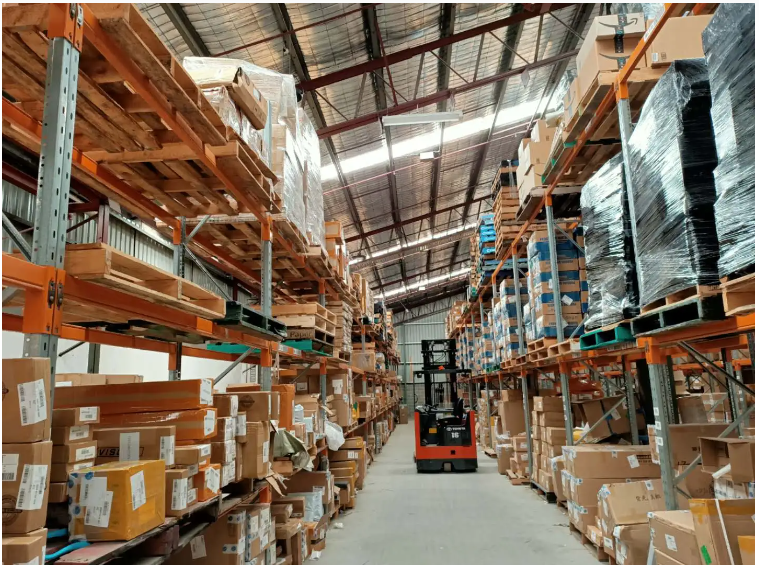Odomknutie cenovej efektívnosti v globálnych logistických službách prostredníctvom strategického FCL prepravy
V dnešnom rýchlo sa meniacom globálnom obchodnom prostredí sa podniky neustále snažia nájsť spôsoby, ako znížiť logistické náklady, a pritom neohroziť kvalitu dodávok. Jedným z najefektívnejších spôsobov, ako dosiahnuť úspory nákladov, je strategické využitie Prevádzka FCL . Dodávky plných kontajnerov ponúkajú jedinečné finančné výhody, ktoré môžu výrazne zlepšiť celkovú ekonomiku dodávateľského reťazca. Porozumenie hlavným cenovým výhodám FCL prepravy je nevyhnutné pre spoločnosti, ktoré si želajú optimalizovať svoje medzinárodné dopravné procesy a zlepšiť ziskovosť.
Nižšie náklady na prepravu jednotky
Úspory z rozsahu vďaka plným kontajnerovým prepravám
Prevádzka FCL ponúka výrazné úspory z rozsahu tým, že umožňuje podnikom naplniť celé kontajnery výhradne svojím tovarom. Tento prístup rozkladá fixné náklady na prenájom kontajnera, manipuláciu a prepravu na väčší objem tovaru.
Ako sa tieto úspory z rozsahu prejavujú v podobe úspor? Keď je kontajner plne naložený, náklady na prepravu jednej jednotky sa výrazne znížia v porovnaní s čiastočnými dodávkami alebo menej ako plný kontajner (LCL). Táto efektívnosť môže výrazne ovplyvniť celkový rozpočet na prepravu, najmä pre veľkoobjemových exportérov a importérov.
Minimalizácia poplatkov za manipuláciu v porovnaní s LCL
Na rozdiel od LCL prepráv, ktoré vyžadujú individuálnu manipuláciu s viacerými zásielkami v rámci jedného kontajnera, FCL preprava zahŕňa nakládku a vykládku jednej zásielky na jeden kontajner. Toto zjednodušenie znižuje poplatky za manipuláciu účtované prepravcami a prístavmi.
Prečo ovplyvňuje znížená manipulácia náklady? Menej bodov kontaktu znižuje riziko poškodenia, nižšie pracovné náklady a skracuje čas potrebný na vybavenie na prístavoch. To priamo prispieva k nižším nákladom na prepravu a zvyšuje spoľahlivosť dodania tovaru.
Optimalizovaná preprava a znížené meškania
Rýchlejšie colné vybavenie a spracovanie na prístavoch
FCL preprava zvyčajne zabezpečuje rýchlejšie colné vybavenie v porovnaní s LCL. Keďže kontajner obsahuje jedinú zásielku so súdržnou dokumentáciou, colní úradníci môžu spracovať papierovú prácu rýchlejšie a efektívnejšie.
Ako zníženie času vybavenia skracuje náklady? Zníženie času ponechania tovaru na prístavoch znižuje náklady na skladovanie, poplatky za oneskorenie a riziko meškania spôsobeného preťažením. Rýchlejšie uvoľnenie tovaru tiež urýchľuje obrat zásob a znižuje pracovný kapitál viazaný v preprave.
Nižšie riziko poškodenia tovaru a s tým súvisiace náklady
Keďže FCL kontajnery prepravujú tovar od jediného odosielateľa, tovar je zvyčajne lepšie zaistený a menej vystavený posunutiu a poškodeniu v porovnaní so zmiešanými zásielkami v LCL kontajneroch. To zvyšuje bezpečnosť tovaru počas prepravy.
Aké nákladové dôsledky má znížené riziko poškodenia? Predchádzanie poškodeniu znižuje nároky na odškodnenie, náklady na prebalenie a potenciálny výpadok tržieb v dôsledku oneskorených alebo chybných dodávok. Zlepšená celistvosť tovaru zvyšuje spokojnosť zákazníkov a znižuje finančný dopad prepravných incidentov.

Zlepšená kontrola nad logistikou a plánovaním
Väčšia flexibilita v časovaní dodávok
FCL preprava poskytuje spoločnostiam väčšiu kontrolu nad tým, kedy ich zásielky odchádzajú a prichádzajú, keďže si môžu rezervovať celé kontajnery na uprednostnené plavby. Táto kontrola umožňuje synchronizáciu s výrobnými plánmi a trhovou poptávkou.
Ako sa lepšia kontrola plánovania premietne do nákladových výhod? Včasné dodania zabezpečujú pred nákladným expedovaným tovarom, znižujú náklady na skladovanie zásob a zvyšujú efektivitu dodávateľského reťazca. Vyhnúť sa poslednú chvíľu zmenám v dodaniach pomáha minimalizovať sankcie a príplatky.
Zjednodušená koordinácia a znížená administratívna záťaž
Spracovanie jedného kompletného kontajnerového zásobenia znižuje zložitosť koordinácie viacerých malých zásielok, z ktorých každá má samostatnú dokumentáciu a požiadavky na sledovanie. Toto zjednodušenie zníži administratívne náklady.
Prečo je znížená kancelárska práca dôležitá? Zníži pracovné hodiny strávené dokumentáciou, zlepší presnosť údajov a zníži chyby, ktoré by mohli viesť k pokutám alebo meškaniu dodania. Zefektívnené procesy znamenajú nižšie prevádzkové náklady pre logistické tímy.
Optimalizácia obalov a využitia kontajnerov
Efektívne využitie priestoru v kontajneroch
Spoločnosti využívajúce FCL prepravu môžu plánovať svoje stratégie balenia a paletizácie, aby maximalizovali objem kontajnerov. Táto optimalizácia znižuje stratený priestor a počet potrebných kontajnerov.
Ako ovplyvňuje efektívne využitie priestoru náklady? Znižuje celkový počet prenajatých a prepravovaných kontajnerov, čím sa ušetrí na prepravných poplatkoch a manipulačných nákladoch. Zároveň minimalizuje environmentálne náklady spojené s prepravou menšieho počtu kontajnerov.
Vlastné obalové riešenia na zníženie nákladov
Vďaka plnej kontrole nad obsahom kontajnera môžu podniky využiť vlastné návrhy obalov, ktoré presne zodpovedajú rozmerom kontajnera. Tým sa zníži nadbytočné balenie a odpad z materiálu.
Aké výhody prináša vlastné balenie pri FCL preprave? Znižuje náklady na obalový materiál a minimalizuje hmotnosť, ktorá môže ovplyvniť výšku prepravného. Prispôsobené balenie tiež zlepšuje ochranu tovaru a efektivitu manipulácie.
Využitie technológií na zvýšenie úspor
Sledovanie v reálnom čase pre aktívne riadenie dodávateľského reťazca
Integrácia technológií, ako je sledovanie GPS a monitorovanie zásielok v FCL Shipping, umožňuje spoločnostiam získať reálnu viditeľnosť umiestnenia a podmienok kontajnerov.
Ako technológie sledovania prispievajú k úsporám nákladov? Umožňuje aktívne reagovať na meškania alebo prerušenia, čím sa znižuje čas výpadkov a vyhýba sa nákladným expeditným zásielkam. Zvýšená viditeľnosť zlepšuje rozhodovanie a prideľovanie zdrojov.
Analýza údajov na identifikáciu príležitostí na zníženie nákladov
Prístup k podrobným údajom o doprave umožňuje spoločnostiam analyzovať trendy, výkonnosť dopravcov a efektívnosť trasy. Tieto poznatky môžu byť informáciou pre strategické úpravy prevádzky FCL Shipping.
Aká je hodnota analýz pri riadení nákladov FCL Shipping? Identifikácia neefektívností alebo úzkových krokov umožňuje spoločnostiam vyjednávať o lepších zmluvách, optimalizovať trasy a zlepšiť proces balenia. Toto neustále zlepšovanie vedie k trvalému zníženiu nákladov.
Riadenie rizík a poisťovne
Nižšie poistné z dôvodu zníženého rizika
Keďže kontajnery FCL prepravujú náklad od jedného odosielateľa, rizikový profil je často nižší v porovnaní s LCL, ktorý zahŕňa viac zásielok a spracovateľov. Poistné spoločnosti si túto odlišnosť uvedomujú pri výpočte poistnej sadzby.
Ako nižšie náklady na poistenie ovplyvňujú celkové náklady na prepravu? Znížené poistné znižujú celkové logistické výdavky a zlepšujú ziskové rozpätie. Dôveryhodné prevádzky FCL Shipping tiež zvyšujú dôveru u poisťovní, čo môže viesť k lepším podmienkam v priebehu času.
Plánovanie pre prípad núdze na minimalizáciu finančnej expozície
Plná kontrola nákladov v kontejneroch umožňuje spoločnostiam implementovať lepšie stratégie riadenia rizík, ako je zabezpečenie nákladu a výber trasy, aby sa predišlo poškodeniu a strate.
Ako efektívne riadenie rizík znižuje náklady? Zabraňuje finančným stratám z nárokov na náklad a súdnych sporov. Ak sa plánuje na neplánované situácie, pomáha to udržiavať plynulú prevádzku a obmedzuje nečakané výdavky.
Účinnosť v oblasti životného prostredia a dôsledky nákladov
Znižovanie uhlíkovej stopy prostredníctvom optimalizovaného kontajnerového prepravného spojenia
Plné kontajnerové prepravy maximalizujú objem prepravovaný na jednu zásielku, čo vedie k nižším emisiám na jednotku v porovnaní s čiastočnými nákladmi alebo leteckou prepravou.
Ako súvisí environmentálna efektívnosť s úsporami nákladov? Mnohé podniky profitujú z nižších odvodov na uhlíkové emisie alebo z podpory udržateľnosti tým, že znižujú emisie. Okrem toho, spotrebitelia čoraz viac preferujú spoločnosti, ktoré zavádzajú environmentálne zodpovedné prepravné praktiky.
Nákladové výhody udržateľných prepravných praktík
Zavedenie ekologických prepravných metód v rámci FCL prepravy, ako sú energeticky efektívne lode alebo optimalizované plánovanie trás, môže znížiť spotrebu paliva a prevádzkové náklady.
Aké finančné výhody prinášajú udržateľné praktiky? Nižšie náklady na palivo sa priamo premietnu do nižších prepravných poplatkov. Úsilie o udržateľnosť tiež posilňuje firemnú réputáciu, čo môže otvoriť nové trhy alebo partnerstvá.
Budovanie dlhodobej hodnoty prostredníctvom FCL prepravy
Posilnenie vzťahov so dodávateľmi a zákazníkmi
Spoľahlivá a nákladovo efektívna preprava FCL podporuje konzistentné dodávateľské výkony, čo posilňuje vzťahy v rámci dodávateľského reťazca.
Ako to ovplyvňuje celkové náklady na podnikanie? Silné partnerstvá znižujú transakčné náklady, zlepšujú spoluprácu a podporujú inovácie. Opakované objednávky a odporúčania vygenerované spoľahlivou prepravou pridávajú nehmotnú hodnotu nad rámec bezprostredných úspor.
Podpora škálovateľnosti pre rastúce podniky
Preprava FCL umožňuje podnikom efektívne škálovať svoju logistiku v miere nárastu objemu zásielok, bez proporcionálneho nárastu nákladov.
Prečo je škálovateľnosť dôležitá pre riadenie nákladov? Umožňuje rast podniku s predvídateľnými logistickými nákladmi. Efektívne škálovanie pomáha udržať konkurencieschopné ceny a ziskové marže na rozširujúcich sa trhoch.
Často kladené otázky
Čo robí prepravu FCL nákladovo efektívnejšou než iné metódy prepravy?
FCL preprava ponúka ekonomické výhody vďaka väčším objemom, znížené poplatky za manipuláciu, rýchlejšie colné vybavenie a nižšie riziko poškodenia, čo všetko prispieva k nižším nákladom na logistiku.
Ako FCL preprava zvyšuje spoľahlivosť dodania a znižuje náklady?
Kontrolou plných kontajnerov spoločnosti minimalizujú meškania počas prepravy, znížia riziko poškodenia a zjednodušia plánovanie, čo vedie k nižším neplánovaným výdavkom a zlepšenej pravidelnosti dodávok.
Môže integrácia technológií ďalej znížiť náklady FCL prepravy?
Áno, technológie ako napríklad sledovanie v reálnom čase a analytické spracovanie údajov poskytujú prehľad a dôležité informácie, ktoré pomáhajú optimalizovať trasy, riadiť riziká a znížiť neefektívnosť.
Je FCL preprava vhodná pre menšie objemy zásielok?
FCL preprava je najefektívnejšia z hľadiska nákladov pre väčšie zásielky, ktoré môžu vyplniť celý kontajner. Pre menšie objemy môže byť ekonomicky výhodnejšia alternatíva ako LCL, avšak FCL ponúka lepšiu kontrolu a bezpečnosť pri preprave veľkých objemov.
Obsah
- Odomknutie cenovej efektívnosti v globálnych logistických službách prostredníctvom strategického FCL prepravy
- Nižšie náklady na prepravu jednotky
- Optimalizovaná preprava a znížené meškania
- Zlepšená kontrola nad logistikou a plánovaním
- Optimalizácia obalov a využitia kontajnerov
- Využitie technológií na zvýšenie úspor
- Riadenie rizík a poisťovne
- Účinnosť v oblasti životného prostredia a dôsledky nákladov
- Budovanie dlhodobej hodnoty prostredníctvom FCL prepravy
- Často kladené otázky



